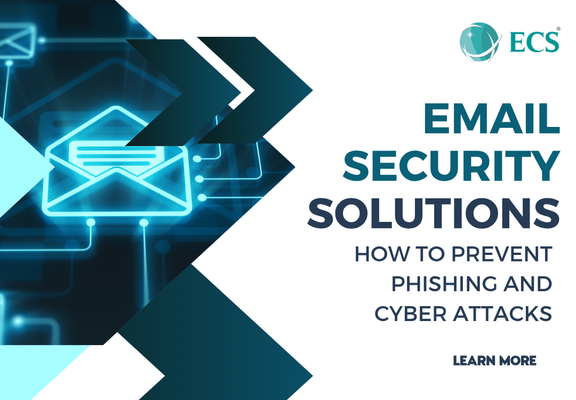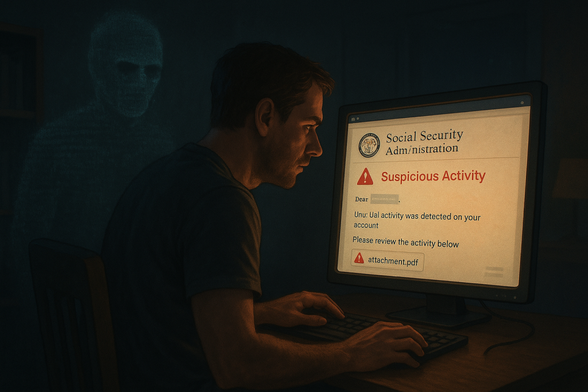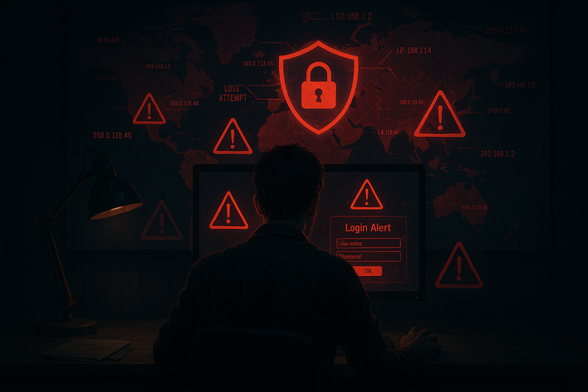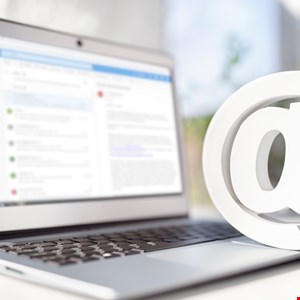They Want Total Control: The Scary Truth About the SSA Phishing Scam That’s Hijacking Your Life
1,512 words, 8 minutes read time.
In today’s digital world, the biggest danger isn’t just clicking the wrong link—it’s trusting the wrong email. If you think you’d never fall for a scam, you might want to reconsider. A new wave of phishing attacks, recently exposed by cybersecurity experts, is fooling even the tech-savvy. These attacks use fake—but highly convincing—emails from what looks like the Social Security Administration (SSA). The real goal? Trick you into installing legitimate-looking software called ScreenConnect that gives hackers full access to your computer. And from there, it’s game over.
This campaign isn’t just another poorly worded spam message. It’s polished, timely, and dangerously persuasive. So let’s break it down—from the technical details to how you can protect yourself, because this scam isn’t just targeting random people. It’s targeting all of us.
It Starts with Trust: How the Scam Hooks You
Every American adult knows about Social Security. Whether you’re checking your retirement benefits or keeping track of work credits, the SSA is part of your financial life. That’s what makes this phishing scam so effective. The emails being sent out are almost indistinguishable from the real thing. They feature government logos, familiar language, and even match up with when people normally receive their annual Social Security statements.
According to Cyble, attackers “are leveraging Social Security themes to distribute malware via legitimate-looking emails with malicious attachments” (Cyble). The subject lines reference documents like “SSA Statement Available” or “Your 2025 Social Security Report,” and the attachments are disguised executables with names like SSAstatment11April.exe. Yes, you read that right—one letter off, and that’s how they get around your antivirus.
The malware inside these attachments? It’s not ransomware. It’s not a virus that instantly wipes your data. It’s a tool called ScreenConnect—also known as ConnectWise Control. It’s legitimate remote access software used by IT teams and help desks all over the world. But in this context, it’s a Trojan horse. Once you install it, the attackers don’t need to exploit any bugs or break any passwords—they just log in and start poking around.
Why You’re More Vulnerable Than You Think
Men, especially those managing their own tech or finances, often assume they’re less likely to fall for a scam. But that confidence can work against you. These phishing emails don’t come with obvious red flags. They’re built to bypass spam filters, and the social engineering is subtle and effective. The attackers understand how and when the SSA normally communicates. By timing their emails around April—when many people expect tax-related or benefits statements—they increase the likelihood that you’ll open the message and trust its contents.
This isn’t a random “Nigerian prince” scheme. It’s a highly coordinated attack. According to Silent Push, malicious actors are even “spoofing legitimate domains to build trust,” using fake but convincing addresses like cloud.screenconnect[.]com.ms (Silent Push). That means your browser may not even warn you that you’re visiting a malicious site.
The Technology Behind the Attack
Let’s talk about ScreenConnect. This isn’t some shady malware written in a basement. It’s enterprise-grade software used by thousands of businesses. But in the wrong hands, it becomes a silent backdoor into your life.
Once installed, the software gives full remote control of your system. That means attackers can move your mouse, type commands, run scripts, and even copy your files. Worse, many antivirus tools don’t flag ScreenConnect as dangerous, because it’s a legitimate tool.
The attackers are using it to quietly access your banking info, download your tax documents, and look for saved passwords. And if you’re a small business owner or IT admin, it’s even worse. If you’re using the same machine to manage other accounts or access company data, attackers now have a gateway into your entire network.
According to Sophos, similar campaigns are being linked to ransomware operators like the Qilin group. These actors are well-funded and have already moved from personal attacks to targeting Managed Service Providers (MSPs), which can lead to mass data breaches if successful.
What They Really Want From You
At first, it may look like a scam targeting your Social Security info. But the reality is darker. Once hackers have access to your device, they look for anything valuable—bank accounts, crypto wallets, saved passwords, tax files, scanned IDs, and more. They don’t just want your SSN. They want your entire digital identity.
In more sophisticated operations, once they have your credentials, they don’t use them right away. They sell them, or wait weeks before making a move, making it harder for you to trace what went wrong. Worse, if they find access to business or financial accounts, they may use your device as a launchpad for larger attacks.
That’s how phishing becomes ransomware. That’s how identity theft becomes a six-month nightmare.
How to Actually Protect Yourself (Without Going Off the Grid)
Cybersecurity isn’t about paranoia. It’s about strategy. The best way to protect yourself from phishing campaigns like this is by combining smart technology with smarter habits. First, you need good email filtering, especially if you run your own domain. Spam detection has come a long way, but it still struggles with well-crafted government-style emails.
Next, lock down your devices. Use an Endpoint Detection and Response (EDR) solution that can spot and stop unusual software installations, even if they come from legitimate programs. Products like CrowdStrike, SentinelOne, and Microsoft Defender for Business have features specifically designed to catch remote access software that wasn’t approved by you.
But the real game changer? Awareness.
No software in the world will protect you if you give your device away through a download. You need to know how to spot the signs. The SSA will never send you a document as an email attachment. They only send statements through their mySocialSecurity portal or postal mail. If you didn’t sign up for electronic delivery on the SSA’s website, you should never receive anything from them via email—period.
Why This Threat Isn’t Going Away
ScreenConnect is just one of many tools being abused by attackers. In the past, we’ve seen similar tactics using AnyDesk, TeamViewer, and LogMeIn. The FBI and CISA have issued multiple alerts about attackers abusing remote access tools in phishing campaigns.
This attack vector is popular because it’s effective and scalable. Hackers don’t need to code custom malware—they just repurpose what IT professionals already use. And because these tools are allowed through most firewalls and whitelisted on many systems, attackers can sneak in and stay in.
As more cybercriminal groups share tactics and infrastructure, we’re also seeing the rise of phishing-as-a-service (PhaaS). That means smaller, less skilled criminals can rent or buy pre-made campaigns, making it even harder to contain the threat.
Don’t Wait to Become a Victim
If you take anything away from this, let it be this: modern phishing isn’t easy to spot. It’s smart, subtle, and scary. But you don’t have to live in fear. With the right knowledge and a few good habits, you can outsmart even the most sophisticated scams.
So double-check those emails. Don’t download strange attachments, even if they come from a “trusted” source. Keep your devices locked down with solid protection, and question anything that feels off—even if it looks official.
And don’t stop learning. Cybercrime evolves daily, and staying informed is your best defense.
Final Thoughts (and an Invitation)
This campaign isn’t just about stealing Social Security data—it’s about taking control of your entire digital life. The scammers behind these attacks are smart, but you can be smarter. By understanding how they work and how to recognize the signs, you’ll be ahead of 99% of their targets.
Want more guides like this? Subscribe to our newsletter for expert cybersecurity tips, latest threat alerts, and real-world stories from the front lines of digital defense. Or jump into the comments—have you seen an SSA scam in your inbox? Let us know how you handled it and help others stay safe.
Together, we can fight back. One email at a time.
D. Bryan King
Sources
Disclaimer:
The views and opinions expressed in this post are solely those of the author. The information provided is based on personal research, experience, and understanding of the subject matter at the time of writing. Readers should consult relevant experts or authorities for specific guidance related to their unique situations.
Related Posts
#antiPhishingSolutions #avoidPhishingEmails #ConnectWiseControlPhishing #cyberFraudAwareness #cyberHygieneTips #cyberThreatActors #cybercrime2025 #cybercrimeBlogPost #cybersecurityAwareness #cybersecurityBestPractices #cybersecurityEducation #cybersecurityForMen #cybersecurityThreats2025 #emailScamRedFlags #endpointSecurityTools #enterprisePhishingRisk #fakeGovernmentEmail #fakeSSAEmail #fakeSSAPortal #governmentPhishingScams #IdentityTheftPrevention #ITAdminSecurity #legitVsFakeSSA #maleCybersecurityGuide #MSPPhishingAttack #mySocialSecurityScam #phishingAwarenessTraining #phishingCampaignAnalysis #phishingDetectionTips #phishingEmailSigns #phishingPreventionTips #phishingProtection #phishingReport2025 #phishingScamTutorial #phishingAsAService #protectAgainstHackers #protectDigitalIdentity #ransomwarePrevention #remoteAccessScam #remoteAccessToolScam #scamEmailWarning #scamPreventionGuide #scamProofYourSystem #screenconnectBreach #ScreenConnectMalware #ScreenConnectThreat #secureRemoteAccess #secureYourDevice #socialEngineeringAttacks #SocialSecurityPhishingScam #SSACommunicationPolicy #SSACyberattack2025 #SSAMalwareAlert #SSAPhishingEmail #SSAScamAlert #stopIdentityTheft #WindowsMalware2025




